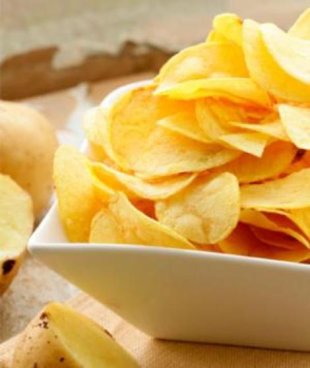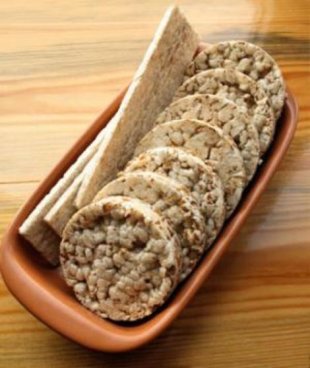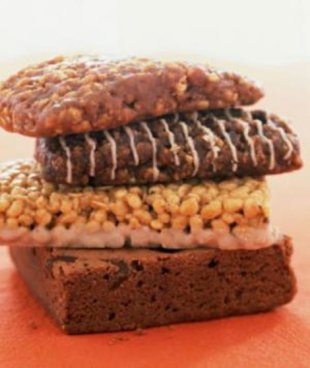By AMY HENDEL | iVillage Canada –
Tue, 12 Jun, 2012 9:33 AM EDT
You think you're doing the right stuff to keep trim, but just can't seem to shed that extra weight. What are the hidden reasons we can't drop those last few pounds?
 Reason #1: You Don’t Realize That Sugar Lurks Everywhere
Reason #1: You Don’t Realize That Sugar Lurks EverywhereMany foods that we don’t think of as sweet, like pasta, soups, cereal, salad dressings and sauces, contain sugar and often it goes by another name like agave nectar, high-fructose corn syrup, evaporated cane juice, fruit juice concentrate(s), glucose, dextrose, sucrose, honey, malt syrup or molasses -- just to name a few!. If your diet is
high in sugar you may be missing out on important nutrients and overeating more often than you realize since sugar stimulates taste. A high-sugar diet can also cause a rapid rise and fall in blood sugar, which can zap your energy and make you feel hungry again.
Solution: Read nutrition labels and steer clear of cereals and sauces that have more than 8 grams of sugar per serving. If you need a sweet fix, choose fresh fruit as often as possible. Skip sodas in favour of water (plain or flavoured with a bit of lemon, lime or juice essence) and unsweetened teas.
Reason #2: You Choose “Healthy” Processed FoodFoods labeled “low sugar,” “low sodium,” “multi grain,” “organic,” “natural,” “vitamin-enriched,” “high fibre,” or “sweetened with honey or agave” may be high in calories or hidden sweeteners or unhealthy additives. And
if you assume it’s healthy, you may eat more of it.
Solution: Switch to whole foods like fresh produce, fish and meat and beans and legumes and limit consumption of processed foods.
Reason #3: You Snack On Nutrition BarsHow often do you eat a nutrition bar as a snack rather than to fuel a workout? If it’s often, you could be downing 400 or more calories without realizing it. Although touted as healthy, many nutrition bars are no better than a candy bar. If you use them for fuel, choose carb-loaded bars for aerobic exercise and protein bars for weight training. If you eat them in the normal course of your day, choose 100-calorie bars for a snack and 350-calorie bars for a meal (and don’t combine with them other high-calorie foods) and avoid bars with trans fats.
Solution: Eat whole-food snacks, like sliced apple and peanut butter, and reserve bars for emergencies.
Reason #4: You Exercise Too LeisurelyIf you rely on the calorie counts on machines or the numbers of calories you’ll burn promised to you by instructors you could be exerting too little effort to jumpstart weight loss. To burn 100 calories an hour, you need to maintain a high level of aerobic activity the entire hour.
Solution: Determine
your target heart rate for optimal exercise then check your pulse several times during workouts (or wear a heart-rate monitor) to make sure you’re consistently in that calorie-burning zone. Try interval training (a mix of fast and slow pace), fun classes (Zumba anyone?) or outdoor exercise to keep you engaged and burning calories at maximal capacity. Choose exercises that offer a challenge or cross train on different equipment to push your body out of weight-loss plateaus.
Reason #5: You Ignore FibreFibre-rich foods are good for weight-loss in two ways: They require more calorie-burning effort during digestion and they are filling and satisfying, which helps curb cravings.
Solution: Aim for 30 grams of fibre a day. Good sources include fruits, vegetables, unprocessed whole grains, beans and legumes and unprocessed nuts.
Reason #6: You're Seduced By "Diet" FoodsBeware of baked chips, whole grain pretzels, low carb dressings, diet sodas, frozen prepared diet entrees and fat-free deli meats. Many of these "diet versions" are actually
high in sodium, which can cause fluid retention; or sugar, which can create a rapid rise and fall of blood sugar, triggering another cycle of eating.
Solution: Stick to fruits, vegetables, beans, legumes and nuts, fat-free dairy products, portion-controlled whole grains and a bit of healthy fat. Prepare your own food as often as possible so you know exactly what how much sugar, fat and salt you are eating.
Reason #7: You Skip BreakfastMore and more research shows that breakfast eaters lose weight and keep it off more easily than those who skip the morning meal. And the heartier the breakfast, the better – you'll be less likely to overeat later in the day.
Solution: The ideal breakfast is a combination of protein, carbs and fat, and adds up to 400 or 500 calories. Try whole-grain, high-fibre cereal, with low-fat Greek yogurt, berries and nuts; a whole-grain waffle with homemade peanut butter, banana slices and a skim latte; or two scrambled eggs with peppers and shredded part-skim mozzarella cheese on a whole grain tortilla.
Reason #8: You Forget About FatPizza isn’t the only food that’s high in oil and fat. Muffins are, too. A lot of processed and refined foods have hidden trans fats, which are partially-hydrogenated oils that can clog and damage your arteries. These fats are predominantly found in fried foods and processed baked goods, stick margarines and shortenings.
Solution: Because manufacturers can claim “zero trans fats” if the food contains less than .5 grams of trans fats per serving, read nutrition labels carefully. If you see “partially hydrogenated oil” in the ingredient list, put it back on the shelf.
Reason #9: You Eat Out Too MuchStudies suggest that eating out socially often means eating more. Between bread or chips, appetizers, wine and dessert -- on top of an entree -- you can consume a lot of calories without realizing it. You may also feel pressure to clean your plate to get the full value of the meal or not waste any food.
Solution: Commit to eating at home more.
Invest in cookbooks for beginners or look for simple recipes online. Plan your meals for the week and create pre-measured snacks ahead of time so you have something healthy to grab on the go. Limit eating out to once or twice a week.
Reason #10: You Eat “Unclaimed” CaloriesDo you take candies or treats from bowls at work? Do you sample food from your partner’s plate? Do you nibble and taste as you cook? These unaccounted for calories add up.
Solution: Keep a food journal and jot down
everything you eat so you can see how often you
nibble, sample and taste. Make a point of cutting back on those unclaimed calories and keep healthy snacks on hand so you’re less likely to munch on empty calories.
Reason #11: Your Environment Encourages EatingThe color of the room, the amount of lighting and whether you listen to music or watch TV can all affect your appetite, according to research by Brian Wansink in the Cornell Food and Brand Lab. Warm colors like red and yellow stimulate appetite while cool colors like blue and green suppress it. Listening to music and watching TV or reading may cause you to overeat either by increasing your appetite or promoting
mindless eating. Bright lighting makes you eat faster while eating outdoors slows consumption.
Solution: Dim the lighting, turn off any distractions like the radio, TV or the computer and eat your meal at a set table as often as possible.
Reason #12: You Drink Alcohol Before or During MealsIf you have a drink or two most nights before dinner, your ability to gauge fullness may be blunted making you more likely to overeat, especially at a buffet. You also need to add those liquid calories to your day’s tally -- at average of 100 calories per drink, it's easy to rack up a few hundred empty calories.
Solution: Drink an occasional glass of wine or wine spritzer, but remember to count those calories and be aware of appetizer, entree and dessert portions
.
Reason #13: You Don’t Discriminate Against Condiments Calories from condiments like mayonnaise and ketchup, salad dressing and other add-ins like croutons, add up, especially since most of us eat more than one serving. A tablespoon of mayonnaise, which is mostly fat, and one ounce of croutons is 132 calories.
Solution: Choose condiments wisely, substituting lower-calorie mustard, hummus or avocado for mayonnaise, and measure by the teaspoon.
Reason #14: You Graze All DayGrazing can be healthy but it can also go haywire, if you’re not keeping track of how much you’re eating or paying attention to hunger signals.
Solution: Keep a food journal (or download an app) to track how much you eat, how often you eat, the specific amounts or serving sizes of carbohydrates, fats and proteins you are eating daily and be mindful of how often you graze.
Reason #15: You Think Gluten-Free Equals Calorie-FreeMany people who aren’t allergic to gluten are still choosing gluten-free foods because they equate them with lower calories. The same goes for “diabetes-friendly foods” and foods labeled with terms like “low carb” or “low fat.”
Solution: Skip gluten-free foods if you’re not allergic to gluten. They won’t help your waist, wallet or overall health. If you are allergic to gluten, keep track of your carbohydrate consumption and make sure you get enough protein.




















